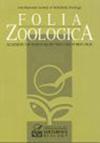Assessing the reproductive status of a breeding, translocated female giant panda using data from GPS collar
Q2 Agricultural and Biological Sciences
引用次数: 2
Abstract
Abstract. Reintroductions and translocations have proven to be effective measures for rescuing small, isolated populations of endangered wildlife. However, the reproductive status of released wildlife is hard to obtain. To date, a giant panda named Luxin is the only translocated giant panda that has successfully bred in the wild. Using data collected from the GPS collar attached to her, we analysed her activity and home range during a breeding year and compared these values with those collected during a non-breeding (control) year. Delivery and mating days can be identified by extremely low levels of activity or even by the absence of activity. The activity of a giant panda with an infant was low, but it increased gradually after delivery. The activity rates during both the delayed implantation period and the infant-caring period were significantly lower in the breeding year than those in the control year. In the breeding year, the home ranges during the delayed implantation period and pregnancy were larger than those in the control year, while the home range during the infant-caring period was much smaller than that in the control year. Our results suggest that GPS collars embedded with activity sensors can be used to monitor the breeding status of released female giant pandas. They can provide valuable information for decision making in future release projects, providing only small disturbances to released giant pandas.利用GPS项圈的数据评估一只繁殖、易位的雌性大熊猫的生殖状况
摘要重新引进和迁移已被证明是拯救小的、孤立的濒危野生动物种群的有效措施。然而,野生动物的繁殖状况很难获得。迄今为止,一只名叫芦新的大熊猫是唯一一只在野外成功繁殖的易地大熊猫。利用从它身上的GPS项圈收集的数据,我们分析了它在繁殖期的活动和活动范围,并将这些数据与非繁殖期(对照)收集的数据进行了比较。分娩和交配的日子可以通过极低的活动水平甚至没有活动来确定。带着幼仔的大熊猫活动本来很低,但在分娩后逐渐增加。繁殖年延迟着床期和育婴期的活性率均显著低于对照年。在繁殖年,延迟着床期和妊娠期的家范围比对照年大,而育婴期的家范围比对照年小得多。我们的研究结果表明,嵌入活动传感器的GPS项圈可以用于监测放生雌性大熊猫的繁殖状况。它们可以为未来放生项目的决策提供有价值的信息,只会对放生大熊猫造成很小的干扰。
本文章由计算机程序翻译,如有差异,请以英文原文为准。
求助全文
约1分钟内获得全文
求助全文
来源期刊

Folia Zoologica
生物-动物学
CiteScore
1.70
自引率
0.00%
发文量
0
审稿时长
3 months
期刊介绍:
Information not localized
 求助内容:
求助内容: 应助结果提醒方式:
应助结果提醒方式:


